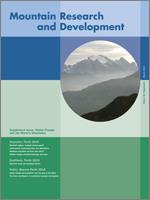BioOne.org will be down briefly for maintenance on 14 May 2025 between 18:00-22:00 Pacific Time US. We apologize for any inconvenience.
Supplement Issue: Global Change and the World′s Mountains—Perth 2010

No abstract available
No abstract available
No abstract available
